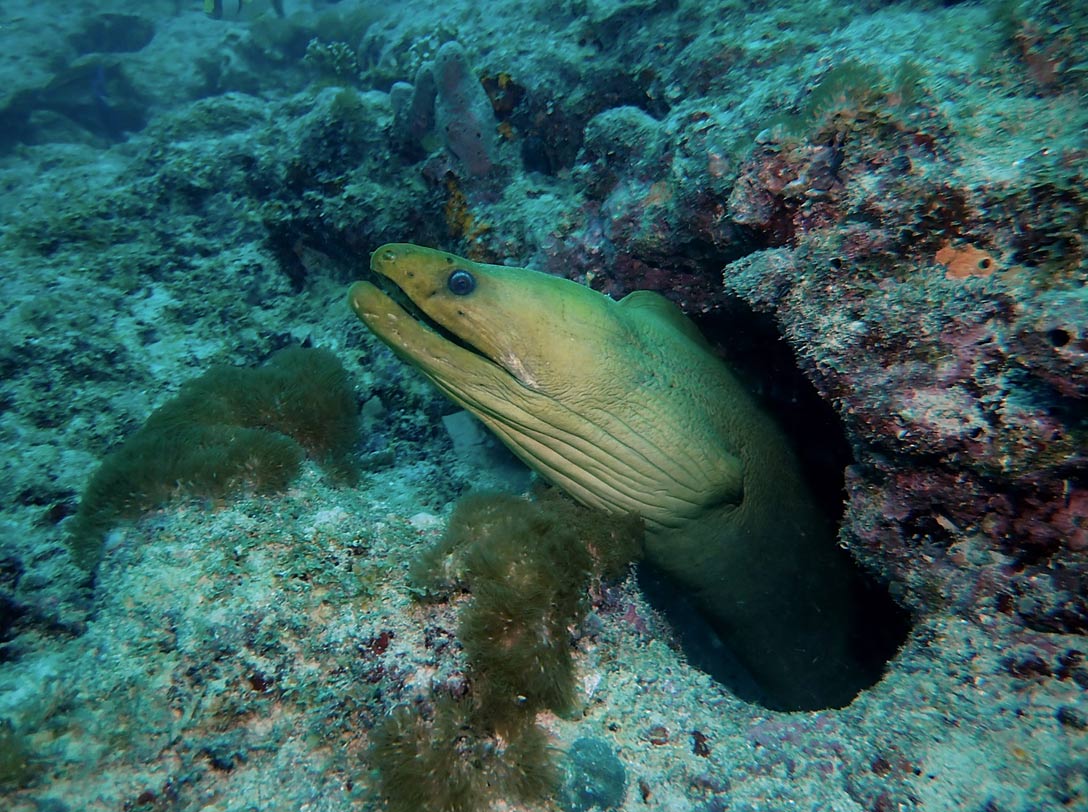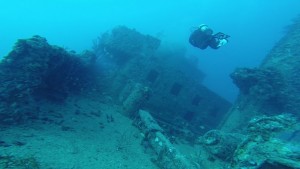14 Jun Why Dive Fort Lauderdale?
 The Florida Reef Tract extends from Key West to Jupiter, Florida. While the Keys’ barrier reef is well-known and Jupiter’s shark feeding dives are gaining popularity, many divers overlook the beauty and convenience of diving between those locations in Fort Lauderdale. In doing so, those divers miss the opportunity to dive on a beautiful three-tier reef system augmented by an abundance of artificial reefs. From drift diving to wreck diving to first class instruction, Fort Lauderdale is a hidden gem in the diving world.
The Florida Reef Tract extends from Key West to Jupiter, Florida. While the Keys’ barrier reef is well-known and Jupiter’s shark feeding dives are gaining popularity, many divers overlook the beauty and convenience of diving between those locations in Fort Lauderdale. In doing so, those divers miss the opportunity to dive on a beautiful three-tier reef system augmented by an abundance of artificial reefs. From drift diving to wreck diving to first class instruction, Fort Lauderdale is a hidden gem in the diving world.
NATURAL REEFS
Fort Lauderdale’s three-tier reef system provides quality diving for all levels of divers. The third reef, at a depth of 45-95 feet, provides a playground for larger reef fish, nurse sharks, and loggerhead turtles. The second reef, which generally varies from 20-30 feet, is perfect for relaxing drift dives after a deep first dive and is the sweet spot for seeing the great variety of fish, coral, and sponges the area has to offer. The first reef, at a depth of 15-23 feet, provides easy access to shore divers and freedivers hunting for lobster as well as snorkelers on day boats.
ARTIFICIAL REEFS AND WRECKS
 In addition to natural reefs, Broward County has created 112 artificial reefs since 1982, and over 30 of them are wrecks within a 20-minute boat ride from Port Everglades. Most of these wrecks lie in 70-80 feet of water (between the second and third reef) with extensive coral growth and varied marine life inhabiting the wreck. Goliath grouper and great barracuda have homesteads in many of them, and nurse shark sightings are not uncommon. By using a mooring line, divers of all abilities have a great opportunity to dive a different beautiful wreck safely and enjoyably every day of the month. There are even two separate ‘wreck treks’ that offer divers the opportunity to see multiple wrecks in a single dive.
In addition to natural reefs, Broward County has created 112 artificial reefs since 1982, and over 30 of them are wrecks within a 20-minute boat ride from Port Everglades. Most of these wrecks lie in 70-80 feet of water (between the second and third reef) with extensive coral growth and varied marine life inhabiting the wreck. Goliath grouper and great barracuda have homesteads in many of them, and nurse shark sightings are not uncommon. By using a mooring line, divers of all abilities have a great opportunity to dive a different beautiful wreck safely and enjoyably every day of the month. There are even two separate ‘wreck treks’ that offer divers the opportunity to see multiple wrecks in a single dive.
WATER TEMP AND CONDITIONS
The water temperature generally varies from 68F in the winter to 85F in the summer. The bulk of the reefs have a westward-facing ledge with a north-south run. The current tends to be light to mild, enabling divers to conduct drift dives while still maintaining the ability to hold in place for photography or general fish watching. Visibility on the wrecks often exceeds 70’ both horizontally and vertically. The reef generally has top to bottom visibility, with 20-30’ horizontal visibility being the norm.
WHAT IS A TYPICAL DIVE TRIP LIKE?
A typical first dive would be one of the wrecks, such as Hog Heaven, that lies in 72-feet of water. This 180-foot barge inverted on sinking, providing an interesting twist on a traditional wreck dive. There are multiple spots for easy penetration, providing many hiding places for the Goliath groupers and nurse sharks that divers see on nearly every visit. The site also sports airplane wings, culverts, the framework of an old lighthouse, and a smaller, 70-foot barge.
 The second dive of the day might be to one of the many mooring balls on second reef, with the Caves and Barracuda Reef being two great choices. These reefs support a very healthy population of parrot fish, with different species and all stages of development in abundance. There are also many hard corals—brain and star are common—as well as soft corals and sponges. An adept fish watcher can see all five types of Caribbean angel fish (blue, queen, French, grey, and rock beauty) in a single day. Eels have a healthy presence on the reef, ranging from the smaller spotted moray to the large green moray, with a few chain moray and sharp tails thrown in for good measure. Scorpion fish, balloon fish, porcupine fish, and trunk fish are common denizens of the reef. While infrequent, there are other more exotic sightings as well, ranging from Atlantic guitarfish to Caribbean manta rays.
The second dive of the day might be to one of the many mooring balls on second reef, with the Caves and Barracuda Reef being two great choices. These reefs support a very healthy population of parrot fish, with different species and all stages of development in abundance. There are also many hard corals—brain and star are common—as well as soft corals and sponges. An adept fish watcher can see all five types of Caribbean angel fish (blue, queen, French, grey, and rock beauty) in a single day. Eels have a healthy presence on the reef, ranging from the smaller spotted moray to the large green moray, with a few chain moray and sharp tails thrown in for good measure. Scorpion fish, balloon fish, porcupine fish, and trunk fish are common denizens of the reef. While infrequent, there are other more exotic sightings as well, ranging from Atlantic guitarfish to Caribbean manta rays.
PRIME LOCATION
In addition to outstanding enjoyment in and on the water, Fort Lauderdale affords divers the chance to relax above water with world class beaches and all the conveniences of a major US city. Restaurants, bars, and shopping are all easily accessible. Due to its central location, Fort Lauderdale also serves as a good hub to other diving in the area, whether it be the Florida Keys, Lauderdale-by-the-Sea, or Blue Heron Bridge.

WHY DIVE FORT LAUDERDALE?
When looking for a beautiful reef for a relaxing photo or drift dive or an exciting wreck to explore, Fort Lauderdale’s three-tier reef system is the place to be. The convenience, favorable year-round conditions, and beautiful reefs with abundant fish life lead to underwater memories to last a lifetime.
If you feel like you want to take on the adventure that is Fort Lauderdale, don’t hesitate to contact the name in diving and snorkeling in Fort Lauderdale. We offer a wide variety of services from diving lessons to snorkel trips in around the area. Call us today and let us help you plan your next adventure.



Sorry, the comment form is closed at this time.